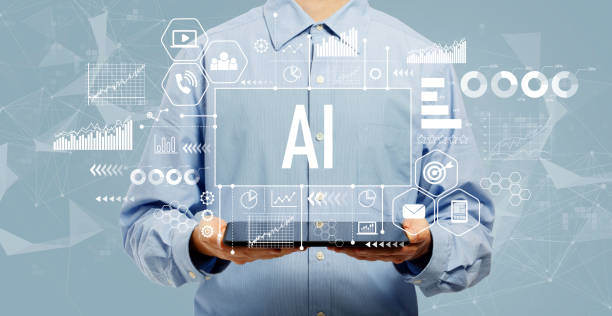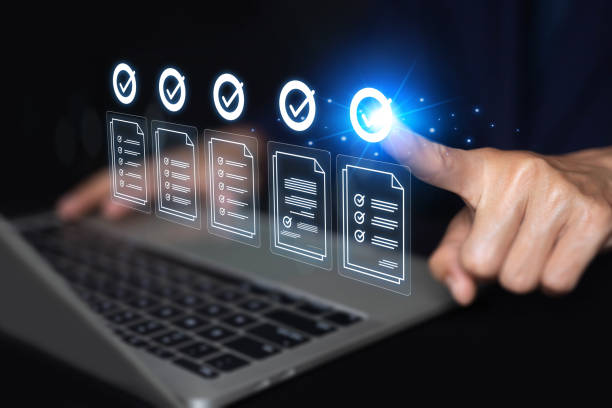Introduction to AI Robots and Their Place
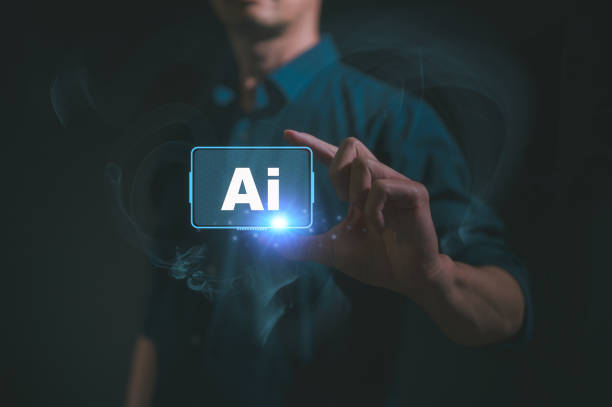
In today’s fast-paced world, the concept of #AI_robot has increasingly come into focus.
These advanced machines, with amazing capabilities in #learning, #reasoning, and #task_execution, are transforming the landscape of various industries and our daily lives.
Unlike traditional robots that merely operate based on fixed programming, an AI robot has the ability to analyze data, recognize patterns, and make independent decisions.
These capabilities enable them to perform effectively in complex and unpredictable environments.
From smart production lines to virtual home assistants, the presence of this novel technology is growing stronger every day, offering immense potential for improving quality of life and increasing productivity.
In fact, it can be said that AI-powered robots are not just tools for automation, but rather partners in intellectual and executive processes that expand the boundaries of human capabilities and provide unprecedented opportunities for innovation and progress.
A deeper understanding of this technology is essential to fully leverage its potential, as we are on the verge of entering an era where interaction with intelligent machines will become the norm, presenting new challenges and opportunities for humanity.
Did you know that customers’ first impression of your company is your website? With a powerful corporate website from RasawWeb, multiply your business credibility!
✅ Custom and eye-catching design tailored to your brand
✅ Improved user experience and increased customer acquisition
⚡ Get a free consultation!
The Evolution of Robotics and Artificial Intelligence
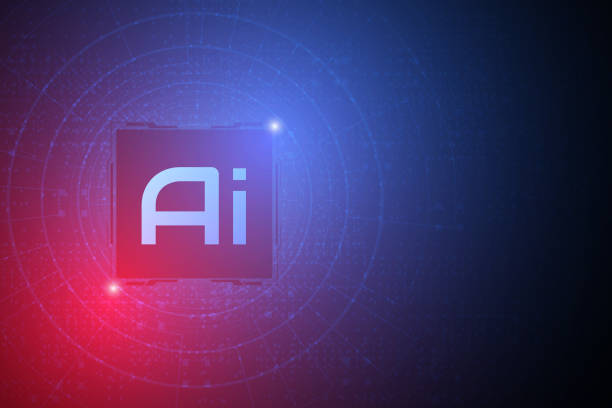
The journey of #robotics and #artificial_intelligence has traveled a long and winding path.
From the initial ideas of automated machines in antiquity to the colossal industrial robots of the 20th century, progress has occurred step by step.
But the real turning point was when artificial intelligence entered the field of robotics.
Initially, robots merely repeated programmed movements.
With the advent of machine learning and #neural_networks, robots gained the ability to #make_decisions and #learn_from_experience.
This transformation elevated them from mere automation tools to entities with cognitive capabilities.
Milestones such as the development of more precise industrial robotic arms in the 1970s, the emergence of mobile robots in the 1980s, and the expansion of AI algorithms in the 2000s, all contributed to the ultimate convergence of these two fields.
Today, this convergence has led to the creation of machines that can interact complexly with their environment, recognize faces, understand natural language, and even comprehend emotions to some extent.
These advancements are evident not only in laboratories but also in our daily lives; from self-driving cars to surgical robots in hospitals.
This evolution shows that the future of #smart_technology will increasingly be in the hands of AI-powered robots that are continuously learning and evolving.
Types of AI Robots and Their Amazing Applications
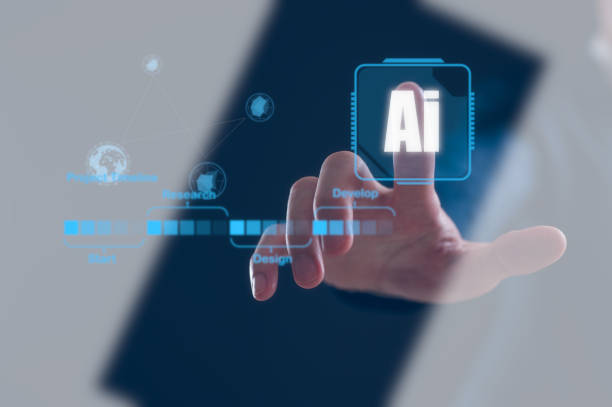
The world of #smart_robots is vast and diverse, encompassing various types, each designed for specific applications.
From industrial robots that work with unparalleled precision and speed on production lines, to #service_robots that assist humans in hospitals, hotels, and homes.
These AI robots can perform repetitive and dangerous tasks while increasing accuracy and safety.
Furthermore, #collaborative_robots or cobots, designed to work alongside humans, are gradually entering various workplaces and revolutionizing #human-machine interaction.
In the medical field, surgical robots assist doctors in performing complex, minimally invasive procedures, and in transportation, self-driving cars are becoming a reality.
Even in space and underwater exploration, an AI robot can access places that are too dangerous or impossible for humans.
The variety of applications and capabilities of these robots is almost limitless, and every day we witness the emergence of new examples that make our lives easier, safer, and more efficient.
This breadth demonstrates the immense and growing potential of this technology in shaping the future.
| Robot Type | Key Capabilities | Example Applications |
|---|---|---|
| Industrial Robots | Assembly, welding, material handling, quality inspection | Automobile production lines, electronics factories, warehousing |
| Service Robots | Vacuuming, food delivery, guest reception, home assistance | Homes, hotels, restaurants, hospitals |
| Medical Robots | Surgical assistance, rehabilitation, drug delivery, diagnosis | Operating rooms, physiotherapy clinics, hospitals |
| Exploration Robots | Mapping, data collection, exploration | Space, deep oceans, dangerous areas |
| Educational Robots | Language tutoring, homework assistance, simulation | Schools, universities, online learning platforms |
How the Intelligent Brain of Robots Functions
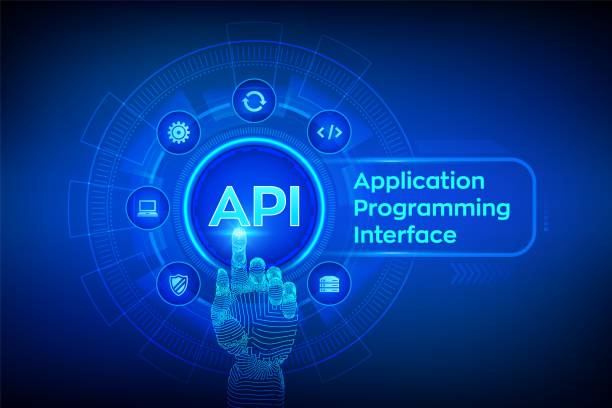
At the heart of every #smart_robot lies a complex set of algorithms and technologies that enable it to #think, #understand, and #act.
The brain of an AI robot primarily operates based on concepts such as Deep Learning and Natural Language Processing (NLP).
Deep learning allows the robot to recognize patterns and make predictions from vast amounts of data, similar to how the human brain learns.
For instance, in machine vision, a robot can identify objects or recognize faces by observing thousands of images.
#Natural_Language_Processing gives robots the ability to understand and respond to human spoken and written language, which is essential for virtual assistants and chatbots.
Furthermore, #machine_vision systems enable robots to perceive their surroundings through cameras and build 3D maps.
This data is then processed by #decision-making algorithms so that the robot can move, manipulate objects, or respond to commands.
This coordination between sensors, AI algorithms, and actuators is what gives modern robots extraordinary capabilities, enabling them to perform complex tasks in the real world with high precision and efficiency.
Does your company’s website create a professional and lasting first impression in the minds of potential customers? RasawWeb, with its professional corporate website design, not only represents your brand’s credibility but also opens a path for your business growth.
✅ Creation of a powerful and trustworthy brand image
✅ Attracting target customers and increasing sales
⚡ Get a free consultation
Significant Advantages of Using AI Robots
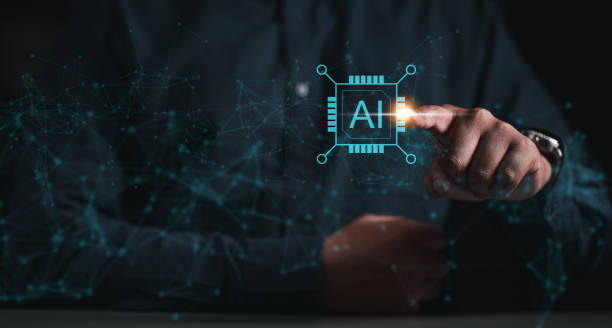
The use of #AI-powered_robots comes with significant advantages that are transforming industries and our daily lives.
One of the most important of these advantages is #increased_productivity.
Robots can perform tasks with unparalleled speed and accuracy, beyond human capabilities, leading to increased and more efficient production.
Furthermore, #cost_reduction in the long term is another benefit; as AI robots don’t need rest, don’t require wages, and make significantly fewer errors, which in turn leads to reduced waste and rework.
Alongside these, #increased_safety is also considered a vital advantage.
Robots can be employed in hazardous environments or for repetitive and tiring tasks that might be harmful to humans.
The high precision of robots in tasks such as surgery or manufacturing sensitive components significantly enhances the final quality of products and services.
This technology also has a high #customization_capability; they can be programmed to perform specific tasks, and in some cases, robots can even adapt themselves to changing needs.
Overall, the use of these technologies not only contributes to technological advancements but also leads to safer work environments and the production of higher-quality and more accessible products and services for the public.
Challenges and Limitations Facing AI Robots
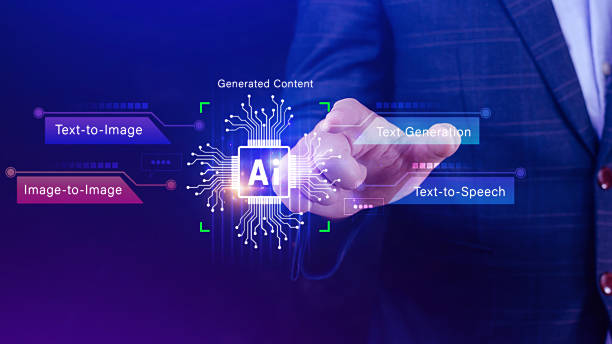
Despite all the advantages that #smart_robots offer, there are also significant challenges and limitations in their development and deployment.
One of the biggest concerns is #job_displacement.
With increased task automation, the fear that robots will replace human labor is growing, which could have widespread #social and #economic consequences.
High initial costs for research, development, and implementation of these systems also represent a major barrier for many businesses, especially small and medium-sized enterprises.
Furthermore, AI robots still perform poorly when faced with unexpected and unplanned situations, and lack common sense or the ability to fully understand #human nuances.
Cybersecurity is also a serious challenge, as robots can be targets of cyberattacks, compromising sensitive data or disrupting their performance.
#Ethical discussions regarding accountability for robot errors and their decisions also remain complex and unresolved.
These limitations necessitate further research and the development of appropriate legal and ethical frameworks to ensure the responsible and sustainable use of this technology, so that we can benefit from its full potential while preventing potential risks.
Ethical Considerations and the Future of Accountability

With the proliferation of #smart_robots, ethical considerations surrounding their use have become one of the most vital topics today.
One of the most important concerns is the issue of #accountability; who is responsible for the errors of an AI robot or decisions that lead to harm? Is it the programmer, the manufacturer, the user, or the robot itself? These questions become doubly important in areas such as self-driving cars or surgical robots.
#Algorithmic_bias is also a serious ethical challenge.
If robot training data contains racial, gender, or social biases, robots will replicate and even amplify these biases, which can lead to discrimination and injustice.
The preservation of #privacy and #data_security has also become a major concern with the collection of vast amounts of information by robots.
The international community is striving to develop ethical and legal frameworks for #responsible_artificial_intelligence.
These frameworks include principles of transparency, justice, non-discrimination, and accountability.
The future of accountability in the world of robotics requires close cooperation between technology experts, policymakers, philosophers, and the general public to ensure that technological advancements benefit all humanity while adhering to ethical principles.
These discussions help us pave a path for robotic development that is not only technically advanced but also ethically sound.
| Ethical Consideration | Challenge Description | Example Application |
|---|---|---|
| Accountability | Determining responsibility for errors or harms caused by robots | Self-driving car accidents, diagnostic errors by medical robots |
| Algorithmic Bias | Transfer and amplification of existing biases in training data | AI-based recruitment systems, facial recognition |
| Privacy | Collection and use of personal data without consent | Home robots that monitor living environments |
| Transparency | Inability to understand robot decision-making logic (black box) | Banking credit scoring systems, judicial decisions |
| Impact on Employment | Displacement of human labor and changes in the job market | Automation in manufacturing and customer service |
An Outlook on the Future of Robotics and Artificial Intelligence
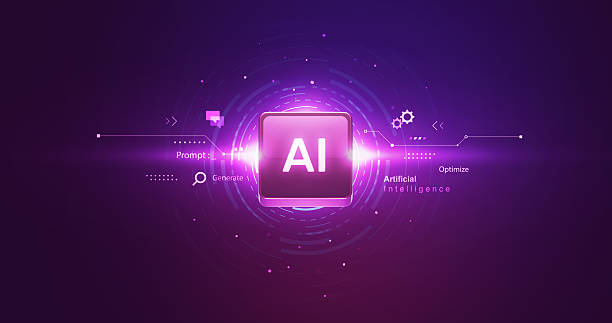
The future of #robotics and #artificial_intelligence appears very bright yet challenging.
Current trends indicate that we are on the verge of a major leap in this field that will transform our lives in various ways.
One of the most important future trends is the expansion of #collaborative_robots (cobots) designed to work alongside humans, not instead of them.
These robots can perform heavy or repetitive tasks, while humans focus on creative work or complex decision-making.
AI robots will play a more prominent role in the near future in areas such as elder care, personalized education, and even art and entertainment.
The development of #bio-inspired_robots, which draw inspiration from nature for their movement and structure design, is another important trend that allows robots to move in more complex environments.
Furthermore, the convergence of AI with technologies like #Augmented_Reality (AR) and #Virtual_Reality (VR) can lead to the creation of new and richer experiences in human-robot interaction.
Smart cities, fully autonomous transportation, and even homes entirely managed by AI are no longer just dreams but are rapidly becoming a reality.
These advancements promise a more efficient, convenient, and safer world, but at the same time, they require deeper discussions around social preparedness and regulatory frameworks to ensure that this future benefits all humanity.
Did you know that 94% of users’ first impression of a business is related to its website design? With professional corporate website design by **RasawWeb**, turn this initial impression into an opportunity for growth.
✅ Attracting more customers and increasing sales
✅ Building credibility and trust in the audience’s eyes⚡ Get a free website design consultation!
Step-by-Step Guide to Interacting with AI Robots

Given the increasing presence of #smart_robots in our lives, understanding how to #effectively_interact with them is of particular importance.
Whether for personal use or in the workplace, adhering to the following tips can enhance your experience.
Firstly, #know_the_limitations.
No matter how advanced robots are, they don’t have a complete understanding of all situations and may encounter difficulties when faced with ambiguities or requests outside their programmed scope.
Therefore, provide clear and precise instructions.
Secondly, #pay_attention_to_data.
Many AI robots are fed with data; the higher the quality and accuracy of the input data, the better the robot’s output will be.
This includes training the robot with diverse and correct examples.
Thirdly, use #repeated_and_continuous_interaction to improve robot performance.
Machine learning-based robots improve with each new interaction.
Therefore, by using them regularly and providing feedback, you help them adapt better to your needs.
Fourthly, #take_security_seriously.
Before deploying any AI robot, ensure its security protocols and, if necessary, take measures to protect data and privacy.
Finally, #be_ready_for_change.
AI technology is evolving rapidly.
By continuously updating your knowledge and embracing changes, you can benefit from the latest capabilities of these robots and better cope with potential challenges.
Social and Cultural Impacts of AI Robots
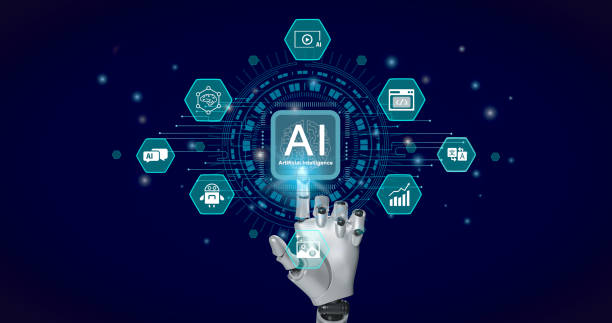
The widespread adoption of #AI_robots is not just a technological transformation; it has also brought about profound #social and #cultural changes.
These robots are redefining the concepts of work, education, and even human relationships.
In the workplace, while some jobs may become automated, new jobs are also emerging in the areas of robot development, maintenance, and training, requiring new skills.
This compels educational systems to revise their curricula to train the future workforce.
From a cultural perspective, #service_robots and #companion_robots are becoming part of many families’ daily lives, which can lead to the formation of new patterns of interaction and even attachment between humans and machines.
Questions such as the role of robots in human societies, their rights (if they gain consciousness), and their impact on human creativity and identity are important topics that need to be addressed.
AI robots can also help reduce loneliness among the elderly, assist people with disabilities, and increase access to education and services in underserved areas.
Overall, the impact of these technologies on society is complex and multifaceted.
While there is great potential for improving quality of life, it is necessary to view these changes with an open and critical perspective and to provide solutions to maximize benefits and minimize potential risks, so as to shape a more humane and inclusive future.
Frequently Asked Questions
| Question | Answer |
|---|---|
| What is an AI robot? | An Artificial Intelligence Robot (AI Robot) is a machine capable of perceiving its environment, reasoning, learning, and making decisions to perform tasks autonomously. |
| What is the difference between regular robots and AI robots? | Regular robots perform repetitive tasks based on pre-programming, while AI robots can learn from experience, interact dynamically with their environment, and even behave in a way that resembles human intelligence. |
| What are the main applications of AI robots? | They are used in industries (manufacturing, assembly), medicine (surgery, diagnosis), services (customer support, domestic), exploration (space, underwater), and many other fields. |
| What technologies are used in building AI robots? | Machine Learning, Computer Vision, Natural Language Processing, Deep Learning, and Robotics are among the key technologies. |
| Can AI robots have emotions? | Currently, robots do not possess emotions in the human sense. They can identify and react to emotions, but they do not experience emotions themselves. |
| What are the main challenges in developing AI robots? | Safety, reliability, ethics, autonomy, adaptability to complex environments, and natural human interaction are significant challenges. |
| How are AI robots trained? | They are typically trained using large volumes of data, machine learning algorithms, and deep learning to identify patterns and make decisions. |
| Examples of AI robots in daily life? | Smart robotic vacuum cleaners, customer support chatbots, self-driving cars, and surgical robots in hospitals. |
| Are AI robots a threat to human jobs? | Some repetitive jobs may become automated, but simultaneously, robots can increase productivity and create new jobs in the development, maintenance, and supervision of these systems. |
| How is the future of AI robots predicted? | They are expected to become smarter, more autonomous, and capable of performing more complex tasks, engaging in closer interaction with humans in various environments. |
And other services of Rasaw Web Advertising Agency in the field of advertising
Smart Google Ads: A fast and efficient solution for improving SEO ranking with a focus on custom programming.
Smart Website Development: A professional solution for increasing click-through rates with a focus on intelligent data analysis.
Smart Digital Branding: A fast and efficient solution for increasing website traffic with a focus on intelligent data analysis.
Smart Content Strategy: A novel service for improving SEO ranking through the use of real data.
Smart Advertising Campaign: Professional optimization for customer acquisition using key page optimization.
And over hundreds of other services in the field of internet advertising, advertising consultation, and organizational solutions
Internet Advertising | Advertising Strategy | Advertorial
Resources
The Role of AI Robots in the Future of Industry
Artificial Intelligence and its Ethical Challenges
The Impact of Artificial Intelligence on Daily Life
Latest Achievements in Robotics and Artificial Intelligence
? Build your online business future with RasawWeb Afarin Digital Marketing Agency. By providing specialized services including SEO-optimized website design, Search Engine Optimization (SEO), and professional social media management, we assist you on the path to growth and success. Contact us today and transform your business!
📍 Tehran, Mirdamad Street, next to Central Bank, Southern Kazeroun Alley, Ramin Alley, No. 6

